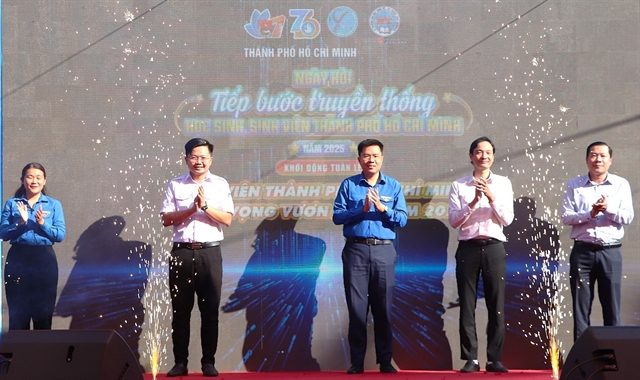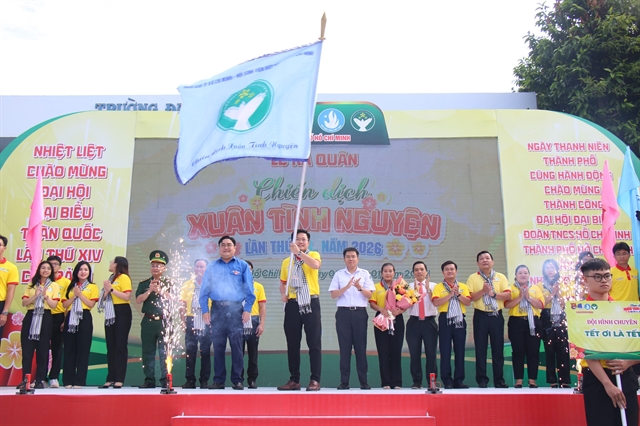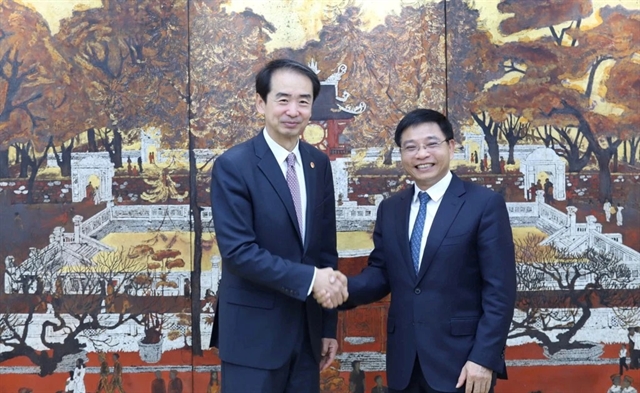 Society
Society


|
| Lạc Hồng University students attend a lecture on semiconductor technology in the practice lab. — VNA/VNS Photo |
HÀ NỘI — The Government is stepping up efforts to draw more students into science, technology, engineering, and mathematics (STEM) fields, with a wide-ranging package of incentives to strengthen the country's future workforce.
Officials say the policy push is critical to meeting Việt Nam's growing demand for skilled personnel in fast-evolving sectors such as artificial intelligence, semiconductors, and emerging technologies.
Over the past several years, STEM education has steadily gained traction across Việt Nam's higher education system.
By 2024, 90 per cent of universities and colleges nationwide had incorporated STEM programmes into their academic offerings. That year, full-time STEM enrolment reached approximately 60,000 students, while total new admissions in the field rose to 218,000, making up 36 per cent of all university entrants.
Postgraduate training has followed suit. In 2024, nearly 20,000 students pursued master's degrees in STEM, while doctoral programmes enrolled close to 4,000 candidates, an increase of roughly 600 over the previous year.
"This is a very positive trend, showing encouraging signs in the training of high-quality human resources," Deputy Minister of Education and Training Phạm Ngọc Thưởng said at a press conference on July 3.
The Government has also identified semiconductor education as a strategic focus, given its critical role in national competitiveness.
Under a dedicated programme approved by the Prime Minister, Việt Nam aims to train at least 50,000 engineers for the semiconductor industry by 2030, and to develop a workforce capable of participating in global high-value supply chains by 2050.
In the 2024–2025 academic year, around 19,000 students - roughly 10 per cent of all STEM enrolments - chose majors related to the semiconductor sector. Currently, 166 institutions nationwide offer semiconductor-related training, including 97 that provide direct instruction.
Despite these developments, Việt Nam's STEM enrolment rate remains modest by international standards.
According to Deputy Minister Thưởng, the proportion of students enrolled in STEM fields currently ranges from 27 to 31 per cent, well below countries such as Malaysia (50 per cent), Singapore (46 per cent), Germany (39 per cent), and South Korea (33 per cent).
"This shows that we need to increase the scale of STEM enrolment," Thưởng said.
To address this gap, the Government is pursuing a comprehensive strategy to expand and support STEM education.
On April 25, the Prime Minister approved a ten-year national plan for developing technological human resources. The plan outlines two overarching objectives and four core task groups, laying the foundation for long-term implementation.
As part of this strategy, the Ministry of Education and Training is finalising a draft decree on scholarship policies for STEM students.
The proposal, developed in consultation with other ministries, is expected to be submitted to the Prime Minister this month. It includes financial support through scholarships and tuition waivers for undergraduate students and postgraduate researchers.
The Ministry is also working with the Ministry of Finance on a separate plan to improve access to student credit. Thưởng said the goal is not only to attract more students into STEM disciplines but also to support their transition into the workforce.
"We are creating the conditions for future talent to fully realise the professional qualifications and skills they have been trained in," he said. — VNS




